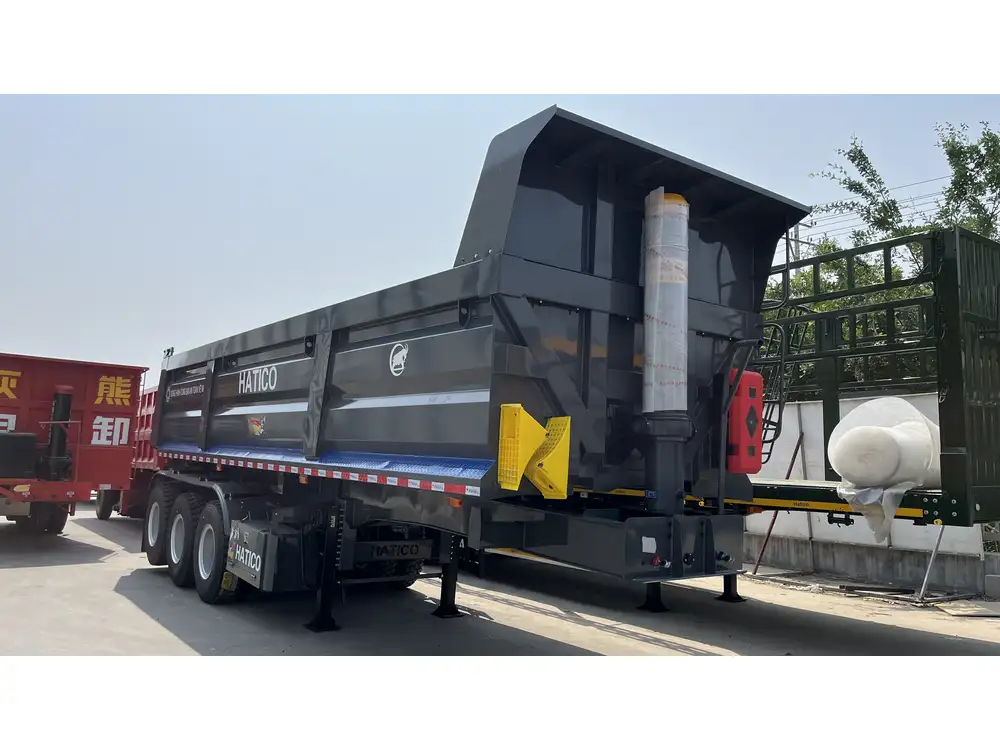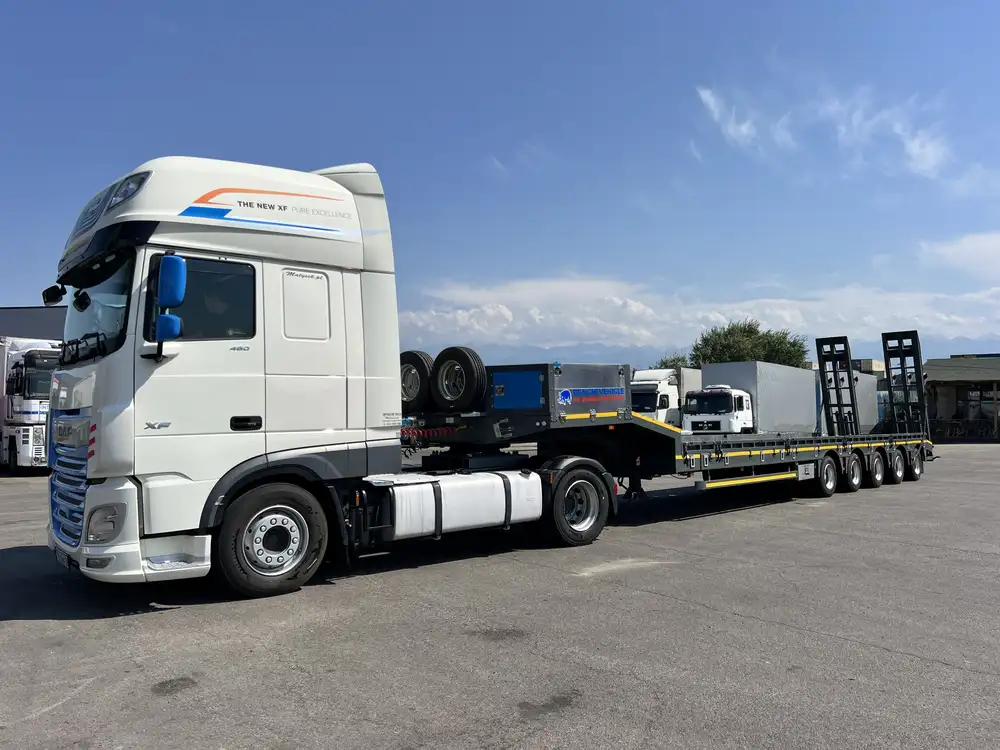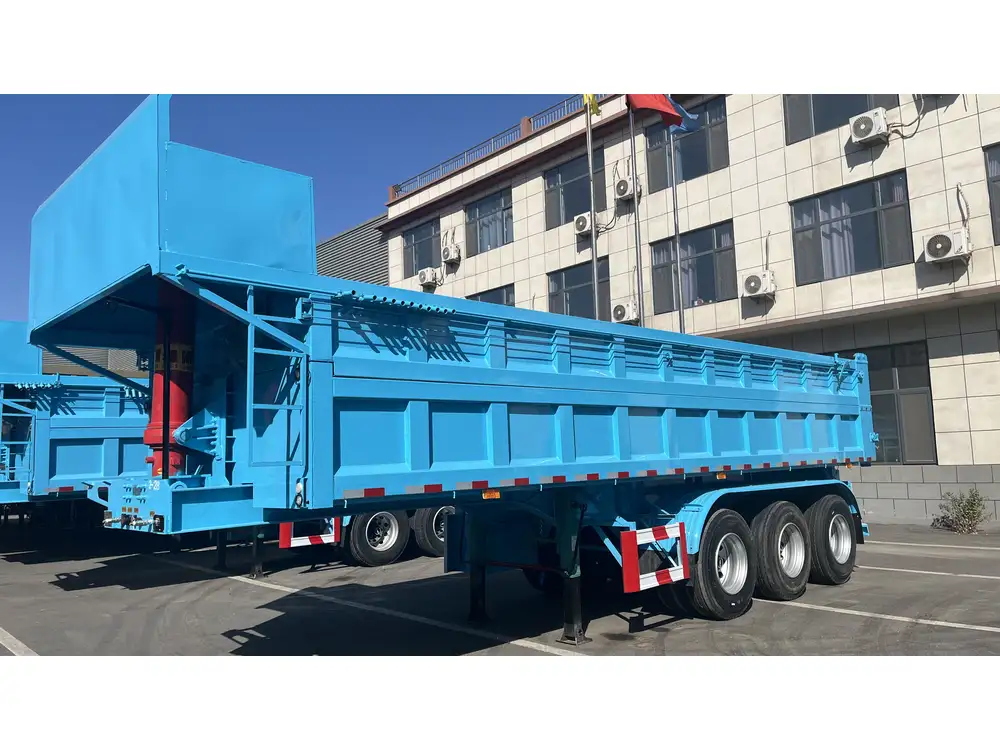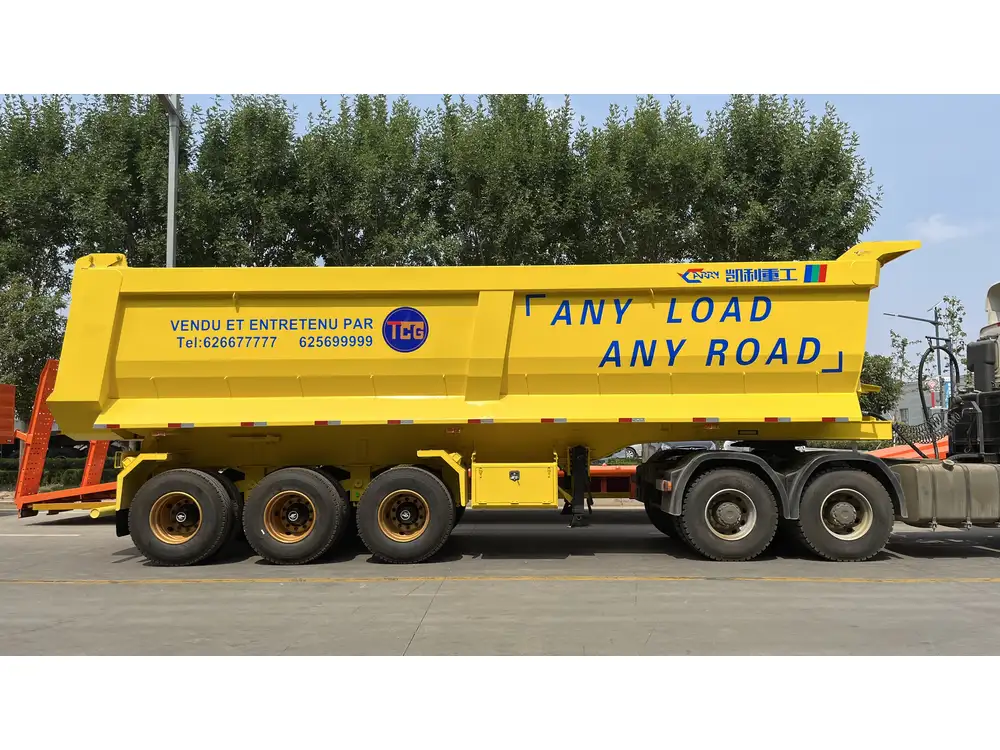Designing a semi-trailer is an intricate process that incorporates various elements to ensure functionality, safety, and durability. As we delve deeper into the core aspects of semi-trailer design, we will explore essential considerations, methodologies, and best practices to meet your specific needs and surpass industry standards.
Understanding the Basics of Semi-Trailer Design
What is a Semi-Trailer?
A semi-trailer is a type of trailer that cannot stand alone and requires a tractor unit to tow it. Distinct from full trailers, semi-trailers have a more flexible design, which includes a kingpin that connects to the tractor. Its typical application spans across realms such as freight transport, logistics, and commercial shipping, making it a vital component of supply chain infrastructure.

Types of Semi-Trailers
| Type | Description | Common Uses |
|---|---|---|
| Flatbed | Open design with no sides or roof, easy loading/unloading | Construction materials, machinery |
| Curtain Side | Flexible tarpaulin sides allow for easy access | Versatile cargo types |
| Reefer | Insulated and temperature-controlled for perishable goods | Food distribution, pharmaceuticals |
| Tankers | Designed to transport liquids | Fuel, chemicals |
| Lowboy | Low-profile design for heavy equipment transport | Construction, industrial applications |
Key Considerations in Semi-Trailer Design
When embarking on the design of a semi-trailer, several factors must be taken into account to optimize performance and compliance with regulations.
1. Weight Distribution and Load Capacity
Achieving an optimal weight distribution is critical for stability and safety.
- Gross Vehicle Weight Rating (GVWR): The maximum weight of the vehicle and its loaded trailer.
- Payload Capacity: Calculating the maximum load the semi-trailer can carry is essential. A well-structured load plan must ensure that weight is evenly distributed to prevent excessive wear on tires and structural components.

2. Materials Used
The choice of materials significantly influences the design, performance, and durability of the semi-trailer.
- Steel: Offers high strength and durability but is heavier.
- Aluminum: Lightweight with excellent corrosion resistance, enhancing fuel efficiency.
- Composite Materials: Emerging technologies with potential for improved performance-to-weight ratios.
3. Aerodynamics
Enhancing the aerodynamic profile of a semi-trailer plays a vital role in fuel efficiency.
- Design Features: Adding side skirts, aerodynamic tails, and rounded edges to the front and rear can reduce drag and subsequently improve fuel economy.
- Testing: Utilizing Computational Fluid Dynamics (CFD) simulations can yield insights into airflow patterns and allow for refinements before production.
4. Safety Regulations and Compliance
Understanding and adhering to the various safety standards is crucial.
- DOT Regulations: Compliance with the Department of Transportation is mandatory, which includes aspects such as braking systems, lighting, and overall vehicle dimensions.
- Trailer Stability: Implementing systems to ensure stability under different load conditions, especially during turns, is paramount.

Design Process of a Semi-Trailer
The design process involves numerous steps, each critical for arriving at a finished product that meets quality standards and user expectations.
Step 1: Initial Concept and Requirements Gathering
Before diving into design specifics, establish the purpose and capabilities required of the semi-trailer. Engage with stakeholders to gather insights on needs related to cargo type, expected load, and delivery locations.
Step 2: Sketching and Prototyping
Start visualizing your ideas through sketches or computer-aided design (CAD) software. Emphasize:
- Dimensioning: Accurate measurements to ensure that the final design complies with legal restrictions.
- Component Layout: Strategic positioning of axles, kingpins, and loading mechanisms.

Step 3: Material Selection
Choose materials that offer the right balance between weight, cost, and durability. Test various materials through finite element analysis (FEA) to predict how they will behave under different load conditions.
Step 4: Detailed Engineering Design
Transform the prototype into a detailed engineering design. Include:
- Structural Analysis: Ensure all structural components can withstand the intended load.
- Safety Features: Integrate braking systems, lighting, and monitoring technology.
Step 5: Prototype Testing
Creating a prototype allows for physical testing of the design under real-world conditions. Conduct stress tests, load-carrying trials, and dynamic performance assessments to identify areas that require modification.

Step 6: Final Adjustments and Production
Feedback from prototype testing can lead to adjustments in design plans. Once finalized, preparation for production can commence, ensuring:
- Quality Control: Establishing consistent quality checks throughout the production process.
- Assembly Line Efficiency: Implementing streamlined processes for timely manufacturing.
Step 7: Post-Production Support
Once completed, providing after-sale services—such as maintenance guidelines and warranty information—ensures customer satisfaction and promotes long-term relationships.
Innovations and Emerging Trends in Semi-Trailer Design
The semi-trailer industry is constantly evolving, driven by technological advancements and shifting market demands.

1. Smart Trailers
- Telematics & IoT Integration: Utilizing sensors and connectivity features to monitor trailer conditions in real time, enhancing logistics through data analytics.
- Automated Systems: Features such as self-leveling mechanisms and automated coupling could further streamline operations.
2. Sustainability in Design
- Eco-Friendly Materials: Investigate the use of recycled composites or sustainably-sourced materials.
- Electric and Hybrid Trailers: Though still emerging, electric semi-trailers present a future direction for reducing emissions.
Considerations for User Conversion
When designing your semi-trailer, keeping the end-user in mind can significantly improve market attractiveness and buyer conversions.

Addressing User Needs
- Customization: Offer tailor-made designs catering to specific cargo types or business requirements.
- User-Friendly Design: Focus on ease-of-use features that enhance loading, unloading, and overall handling for the user.
Competitive Pricing
Conduct market analysis to establish a pricing strategy that maximizes value while remaining competitive. Offering transparent pricing with no hidden costs enhances trust with potential buyers.
Conclusion
Designing a semi-trailer encapsulates a multitude of considerations that extend beyond mere aesthetics. From understanding load capacities and material properties to ensuring compliance with safety regulations and integrating technological advancements, the design process demands a meticulous and strategic approach.
Emphasizing user needs and delivering innovative solutions while remaining aware of emerging trends can inherently promote user conversion, securing your place as a market leader in the semi-trailer manufacturing arena. The future hints at exciting developments that will shape the industry, beckoning today’s manufacturers to lead with creativity and insight.



